 |
Image 01 Sheep figure from the Tai Wan site on Lamma Island, near Hong Kong. From the Spring and Autumn period (776 BCE- 476 BCE). |
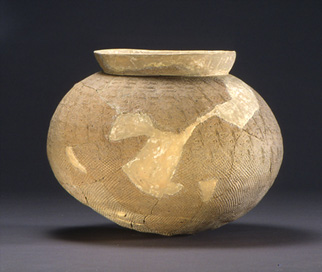 |
Image 02 Jar (guan), from Lantau Island, Hong Kong. Dated between the Western Zhou dynasty and
the Spring and Autumn period (c 11th century BCE- 476 BCE), it was a utensil for ancient inhabitants to hold and store food. |
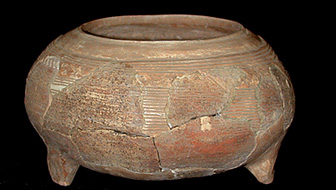 |
Image 03 Three-legged jars such as this, from the Pak Mong site on Lantau Island, are commonly
seen in the tombs of the early Western Han dynasty in Guangdong. It is presumed that it is a utensil for holding food. |
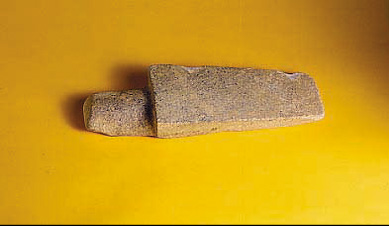 |
Image 04 Wood- working tool known as 'Adze'. Found at Tai Wan on Lamma Island and dated to the
Shang era (c 17th century BCE- 11th century BCE), this type of artifact is commonly found at Hong Kong sites. |
 |
Image 05 A kind of painted pottery known as 'polychrome'. Found at the Tai Wan site on Lamma
Island, this pottery vessel is colored and decorated with paint after biscuit firing. |
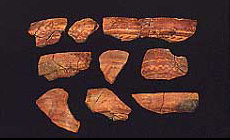 |
Image 06 Polychrome shards from the site of Huangsha, Shenzhen. Their designs are varied. |
 |
Image 07 Unearthed from Da Wan and dating to the Shang era (c 17th century BCE- 11th century
BCE), this necklace is of high academic and artistic values, as it is the only adornment corresponding to the Shang dynasty found in Hong Kong. |
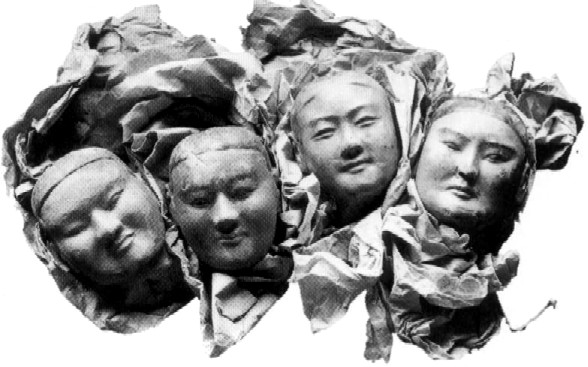 |
Image 08 In March 1990, a vast miniature terracotta army was discovered in 24 pits south of the
mausoleum of Han Jingdi. |
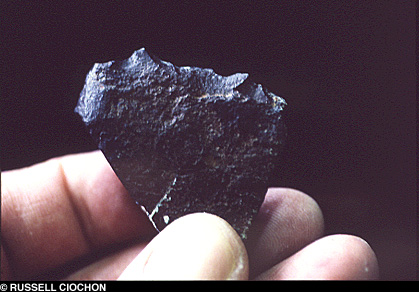 |
Image 09 A primitive axe head found at an archaeological site in China. |
 |
Image 10 An artifact found along the Silk Route in China's Xinjiang province. Dating methods place this figure in the 7th century CE. |
 |
Image 11 From the Banpo site, near Xi'an. Artifacts such as this clay pot are on display in the museums at Banpo Village. |
 |
Image 12 Oldest playable musical instruments found at Jiahu early Neolithic site, associated with the Peiligang culture and dating from 7000 BCE to 5800 BCE. |
| Relics | |||||||||||
 01 |
 02 |
 03 |
 04 |
 05 |
 06 |
 07 |
 08 |
 09 |
 10 |
 11 |
 12 |